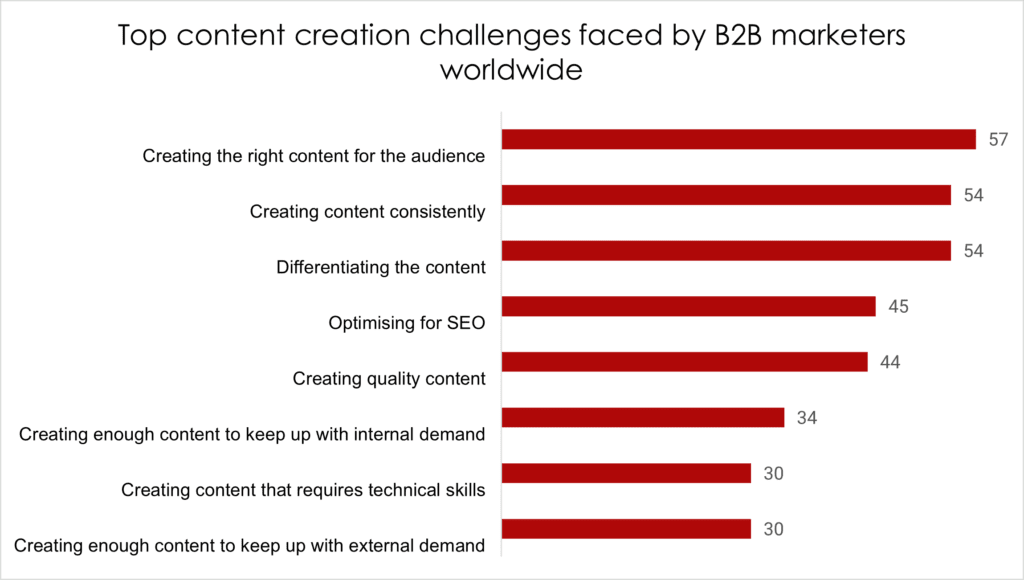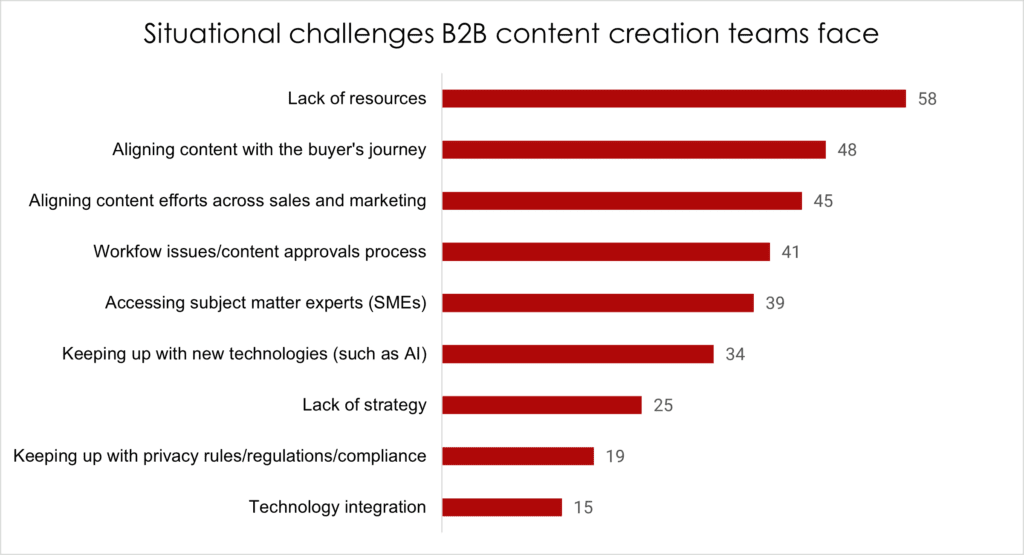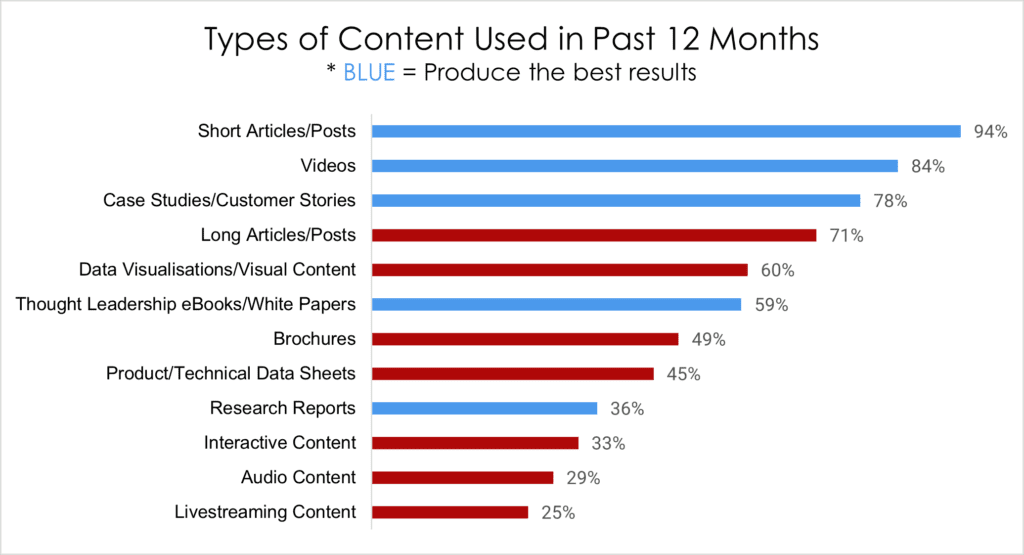For many years, creating enough content was the greatest challenge faced by B2B content marketers.
In 2024, things have shifted.
It’s now the suitability of the content that’s keeping B2B marketers awake at night. The B2B Content Marketing Benchmarks, Budgets, and Trends: Outlook for 2024, the product of research by the Content Marketing Institute and MarketingProfs, reports creating the right content is today’s biggest challenge. Most (57%) B2B marketers are struggling to grab the attention of their targets.
In content marketing, the right eyeballs are more important than the most eyeballs.

Creating content consistently and differentiating the content are the equal second greatest content challenge (54%) for B2B marketers across the world.
Operationally, B2B content marketing teams continue to lament lack of resources (58%). Demand for external support such as for blog writing and ghost writing remains high.
Right message. Right person. Right time.
However, what we can also see from the data is that in many organisations content marketing is still not treated as a coordinated business function. There is a clear need for much closer integration between marketing and sales (business development), and for content to be aligned (or better aligned) with the buyer’s journey.

How to overcome today’s greatest B2B content challenges
1. Understand the purpose of each piece of content
Before creating a piece of content, understand its purpose. What do you want to achieve? In B2B services categories, where we play, it’s typically to promote, educate, or demonstrate.
For example, Promote a win, your involvement in a significant project, your performance against a published benchmark, an acquisition, a lateral hire, or a senior appointment Educate an audience about something relevant – for example, a market, industry, legislative, or regulatory development Demonstrate your leadership and expertise through critical and forward thinking. Clarifying your purpose will help keep you focused.
2. Identify your target audience
There’s little point creating content that is irrelevant or invaluable to your target audience.
It’s essential that you keep your target audience front of mind.
That said, understand not every piece of content you create or curate will be intended for your entire audience set.
For example, some content will be of interest to current users, existing clients.
Some content will be designed to build brand awareness (top of the funnel).
Some content will be intended to develop understanding and interest amongst buyers and influencers (middle of the funnel).
And some content will have the purpose of reinforcing why you’re a preferred provider or a leader in your field (bottom of the funnel).
3. Carefully choose your topic and angle
It’s worth repeating that if your content is not relevant and valuable (which also implies timely) to your carefully defined audience, you’re wasting your time and resources.
An added difficulty is the internet is saturated with content, mostly mediocre, and every individual you’re seeking to engage will inevitably be fed the same or similar content from multiple other sources.
Why should your targets consume your content instead of, or as well as, some other?
Choosing a topic is only half the challenge. You then need to find an angle which is new, contrary, under-exposed, aligned to current affairs, or that captures the zeitgeist.
4. Observe and learn
Pay attention to what appears in the search engine results pages for your keywords. What sort of content is performing best? What’s the benchmark you need to exceed? Observe and learn from the highest ranked content, paying attention to such things as format, structure, headings, word count, and use of visuals.
Then, apply those learnings to create something even more successful.
5. Determine the format of your content
Content can be created in written, video, visual, audio, and interactive formats.
The format you settle upon should be determined by your objective, topic, and audience’s preferences.
Remember, your target audience is not homogenous. Individuals consume content in different ways and for different reasons.
For example, a ‘how-to’ provides step-by-step instructions.
A ‘listical’ serves as a checklist.
A ‘white paper’ – explores a specific topic in-depth and is intended to help an audience understand an issue, solve a problem, or make a decision.
Look at what formats perform well for your company and its competitors.
WHAT CONTENT TYPES PERFORM BEST?
The graphic below presents the types of content used by B2B marketers in the past twelve months. The data clearly shows that two of the formats that produce the best results - white papers and research reports - are being overlooked by many organisations. Only 36% of respondents produced research reports in the prior year yet this form of content is one of the five best performing.
Why is this the case?
Perhaps because white papers and research reports take effort and investment.
A listical (checklist) can be produced in minutes.
A short blog post can be produced in hours.
A piece of 'how to' content, which provides step-by-step instructions, could be turned around in a day.
A white paper might be a week-long project.

Ultimately, your content marketing strategy should incorporate a mix of formats and content types so you are catering to diverse audience preferences and learning styles, thereby maximising engagement and reach, and effectively addressing the different stages of the buyer’s journey.






